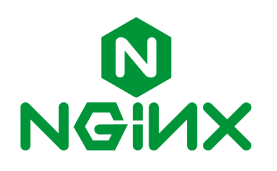NGINX is open source software for web serving, reverse proxying, caching, load balancing, media streaming, and more. It started out as a web server designed for maximum performance and stability. In addition to its HTTP server capabilities, NGINX can also function as a proxy server for email (IMAP, POP3, and SMTP) and a reverse proxy and load balancer for HTTP, TCP, and UDP servers.
Igor Sysoev originally wrote NGINX to solve the C10K problem, a term coined in 1999 to describe the difficulty that existing web servers experienced in handling large numbers (the 10K) of concurrent connections (the C). With its event‑driven, asynchronous architecture, NGINXrevolutionized how servers operate in high‑performance contextsand became the fastest web server available.
After open sourcing the project in 2004 and watching its use grow exponentially, Sysoev co‑founded NGINX, Inc. to support continued development of NGINX and to market NGINX Plusas a commercial product with additional features designed for enterprise customers. NGINX, Inc. became part of F5, Inc.in 2019. Today, NGINX and NGINX Plus can handle hundreds of thousands of concurrent connections, and power more of the Internet’s busiest sitesthan any other server.
The goal behind NGINX was to create the fastest web server around, and maintaining that excellence is still a central goal of the project. NGINX consistently beats Apache and other servers in benchmarks measuring web server performance. Since the original release of NGINX, however, websites have expanded from simple HTML pages to dynamic, multifaceted content. NGINX has grown along with itand now supports all the components of the modern Web, including WebSocket, HTTP/2, gRPC, and streaming of multiple video formats (HDS, HLS, RTMP, and others).
Though NGINX became famous as the fastest web server, the scalable underlying architecture has proved ideal for many web tasks beyond serving content. Because it can handle a high volume of connections, NGINX is commonly used as a reverse proxy and load balancerto manage incoming traffic and distribute it to slower upstream servers – anything from legacy database servers to microservices.
NGINX also is frequently placed between clients and a second web server, to serve as an SSL/TLS terminator or web accelerator. Acting as an intermediary, NGINX efficiently handles tasks that might slow down your web server, such as negotiating SSL/TLS or compressing and caching content to improve performance. Dynamic sites, built using anything from Node.js to PHP, commonly deploy NGINX as a content cache and reverse proxy to reduce load on application servers and make the most effective useof the underlying hardware.
NGINX Plus and NGINX are the best-in-class web server and application delivery solutions used by high‑traffic websites such as Dropbox, Netflix, and Zynga. More than 350 million websitesworldwide rely on NGINX Plus and NGINX Open Source to deliver their content quickly, reliably, and securely.
NGINX keeps evolving. For the past decade NGINX has been at the forefront of development of the modern Web, and has helped lead the way on everything from HTTP/2 to microservices support. As development and delivery of web applications continue to evolve, NGINX Plus keeps adding features to enable flawless application delivery, from support for configuration using an implementation of JavaScript customized for NGINX, to support for dynamic modules. Using NGINX Plus ensures you’ll stay at the cutting edge of web performance.
Information Source – https://www.nginx.com/resources/glossary/nginx/
